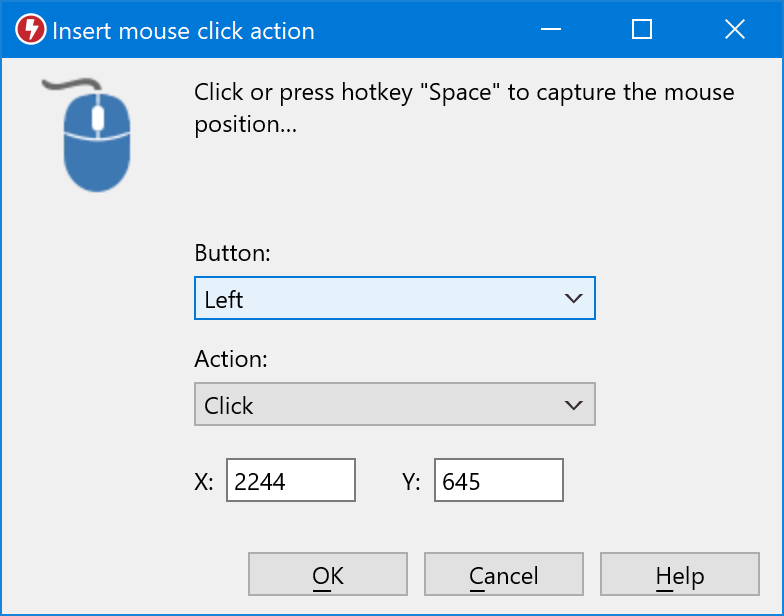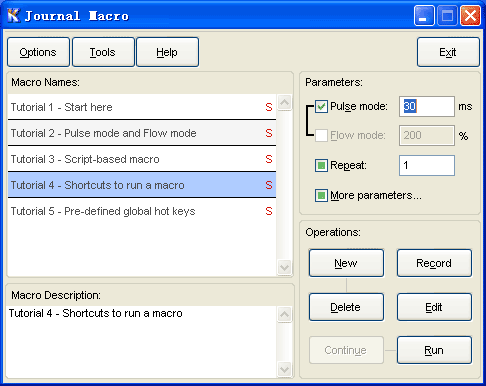
Doing this lets you create quick command buttons that contain embedded macros, without needing to separately create standalone macros. Then just select the desired action choices in the “Category” and “Action” lists and continue to click the “Next >” button, answering questions, until you finish. To add an embedded macro for a single, common action to an Access form, add the command button to the form using the “Command Button Wizard,” as shown above. Instead of embedding a standalone macro, as we just saw, you can also create embedded macros that perform the single actions listed by the choices in these two lists, if desired. However, note the other options for quickly creating buttons for common macro events in the “Categories” and “Actions” lists in the first screen of the “Command Button Wizard” dialog box. Using the “Command Button Wizard” in Access is a very quick and easy way to assign a macro to a command button in a form.
Macro click how to#
How to Add an Embedded Macro to a Button in Access In the final screen, type a name for the command button into the field provided and click the “Finish” button to add the button to the form. Then click the “Next >” button to continue. Then enter the button’s text in the adjacent field or select the icon to include on the button’s face using the adjacent options.

To set the command button’s face, select either the “Text” or “Picture” option button. Then click the “Next >” button to continue.Ī picture showing how to add a macro to a button in Access.

In the next screen, click to select the name of the standalone macro to attach. Then click the “Run Macro” choice in the “Actions” list to the right. In the first screen of the “Command Button Wizard” dialog box, select the “Miscellaneous” choice from the “Categories” list. When you release your mouse button, the command button is added to the form and the “Command Button Wizard” opens. Then click and drag over the area in the form over which to place the command button.

Next, click the “Button” control in the scrollable list of controls in the “Controls” button group on the “Form Design” contextual tab in the Ribbon. This makes it much easier to create a command button. If not highlighted, click the button in the drop-down menu to enable it. Ensure the “Use Control Wizards” button is highlighted, which means it is enabled. Next, ensure you enable the “Use Control Wizards” button by clicking the “More” arrow in the lower-right corner of the scrollable list of controls in the “Controls” button group on the “Form Design” contextual tab in the Ribbon to show its drop-down menu. Then open the desired form to which to add the button and attach the macro in form design view. To add a command button control to a form that a user can click to run a standalone macro in Access, first create the standalone macro to run. How to Add a Standalone Macro to a Button in Access When adding macros to form button in Access, you can either add a standalone macro, which exists as a separate object in the database, or add an embedded macro, which only exists within the form. This lets the user run the macro by clicking the button. Most often, macros are associated with the “click” event of a command button. Whenever the associated button’s “event” occurs, the macro is then run, or executed.

To run macros in Access forms, you often assign a macro to an “event” associated with a command button control in a form. You can add a macro to a button in Access forms to run the macro when a user clicks the form’s button. Overview of Adding Macros to Buttons in Access Forms
Macro click mac os#


 0 kommentar(er)
0 kommentar(er)
